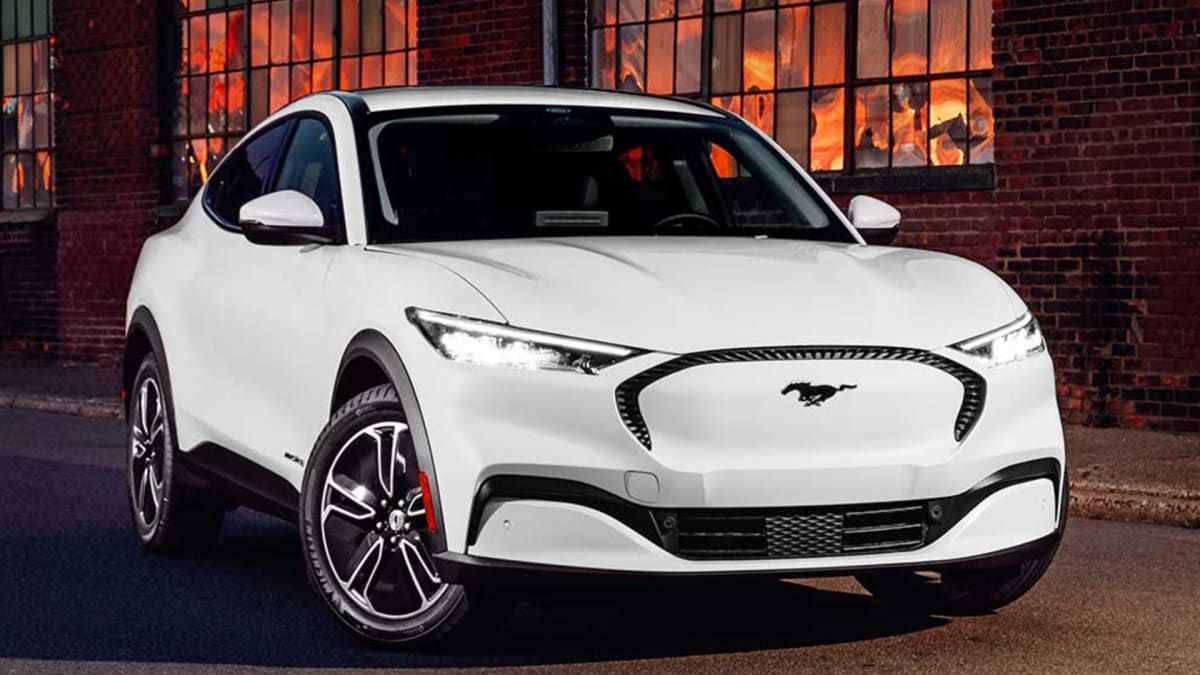
Ford’s results were eagerly awaited, but the automaker based in Dearborn, Mich., did not deliver.
The first-quarter results, released on May 2, were the first time the company has detailed the performance of each of its automotive divisions.
What caught the eye was Ford Model e, the division housing operations related to the development of electric vehicles, Ford's priority in the coming years. Last year, the Blue Oval said that it would spend $50 billion on electric vehicles between 2022 and 2026.
It previously planned to spend $30 billion in the five years ending in 2025.
Ford Model e currently produces electric versions of two of the company’s iconic models: the Ford Mustang Mach-E, an SUV that builds on the collective and popular image of the Mustang, and the F-150 Lightning, a clean version of the F-150 pickup truck, the best-selling vehicle in the United States for many decades.
Bad Performance
In addition, the group builds battery development factories.
At the time of the start of production, the F-150 Lightning already had more than 150,000 orders, in other words, commercial success was almost guaranteed. But the results of the first quarter showed that Ford is still far from the ambitions of becoming equal with Tesla (TSLA), the world number one in electric vehicles in terms of sales, even though the Chinese rival BYD (BYDDY) is closing the gap.
Ford Model e recorded a loss before interest and taxes of $700 million. This is $100 million more than in the fourth quarter of 2022. The margins are also in the red. The EBIT margin (Earnings Before Interest and Taxes), which allows investors to assess the true costs of the activity, is -102.1%. This is more than twice as much as in the fourth quarter of 2022, a period during which the EBIT margin was -40.4%.
On the revenue side, the sales of electric vehicles amounted to $700 million in the first three months of the year, less than half of the $1.6 billion in revenue generated by Ford Model e in the last quarter of 2022.
One fact is striking: Ford (F) only delivered 12,000 electric vehicles in the first quarter, which means that the carmaker lost $58,333 for each clean car sold during this period.
Ford explained this poor performance by higher costs, mainly higher engineering, and spending-related expenses, commodities and other inflationary pressures. Weak sales volumes are due, the carmaker said, to scheduled downtime at the Cuautitlan assembly plant in Mexico, to increase the Mach-E capacity to 35 jobs per hour.
Apart from its eternal rival General Motors, which is also in the midst of a transition to battery powered vehicles, or BEVs, Ford's poor performance should logically delight Tesla. The Austin, Texas-based automaker is seeing one of its competitors in difficulty. But surprisingly, Ford has just received the support of Elon Musk, the CEO of Tesla and tutelary figure in the electric vehicle segment.
Musk is defending the legacy carmaker in a thread on Twitter. He encourages people to be less harsh on Ford, explaining that carrying out a radical transformation involving a change in technologies is never easy. He even goes further to praise Ford's EV strategy and gives praise to the F-150 Lightning.
"Ford $F, the company that's supposed to take on @Tesla, JUST revealed their *net* margin on electric vehicles," a Twitter user wrote on May 3. Ford NET EV Income Today: *negative* 40%. Ford PROJECTED Net EV Income: *negative* 20%. Tesla today's net margin: 11.4%.”
'Ford's Overall Strategy with EVs Is Smart'
Instead of criticizing or mocking Ford, Musk came to the defense of the company run by Jim Farley.
"Always tough with margins for new vehicle lines, especially when there are major technology shifts," the billionaire and techno king commented. "I think Ford’s overall strategy with EVs is smart."
He added: "The electric F-150 (Lightning) has high demand."
Musk's positive remarks toward Ford come at a time when a price war between Tesla and the legacy carmaker is in full swing. Tesla has lowered the prices of its vehicles six times this year, including those of the Model Y SUV, the main competitor of the Ford Mustang Mach-E. Ford had to fight back to stay competitive.
The Blue Oval, on Tuesday, cut the prices of the Mach-E by up to 8%, the second cut the automaker announced this year.
"The resale value for people who bought at higher prices is awful. They never forget," Farley said at a Wall Street Journal forum on May 3, adding that the price war is "a worrying trend."
He warned that Ford will follow Tesla’s price cuts but "there’s a limit to how far we’ll go."
At the end of the third quarter, Tesla will deliver its very first pickup truck, the Cybertruck, which aims to compete with the F-150 Lightning.
"We want all EVs to succeed too," Musk said on April 19, when asked if the price cuts aim to eliminate the competition. "We're like opening up our superchargers [network], we've made up patents available for free. So it's like we're trying to be helpful here, so we're not trying to just destroy competitors or anything like that. We're trying to help competitors, frankly, in any way that we can."







